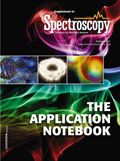Generating Purge Gas for FT-IR Spectroscopy
Fourier transform infrared (FT-IR) spectrometers provide spectra in less time than scanning systems, but water vapor and/or CO2 in the sample chamber leads to additional peaks that may obscure important information. These interferences can be eliminated by sealing the sample chamber and purging with dry, CO2 free air (purge gas) or nitrogen for a short period of time.
Kim Myers, Parker Hannifin Filtration and Separation Division
Fourier transform infrared (FT-IR) spectrometers provide spectra in less time than scanning systems, but water vapor and/or CO2 in the sample chamber leads to additional peaks that may obscure important information. These interferences can be eliminated by sealing the sample chamber and purging with dry, CO2 free air (purge gas) or nitrogen for a short period of time.
While dry CO2 free air (nitrogen) can be obtained from tanks and a desiccator, the use of an in-house generator that ports purge gas directly to the FT-IR is safer, more reliable, convenient, economical, and is more energy efficient than the use of tanks. Figure 1 shows a spectrum before and after purging the sample chamber using an in-house generator (Parker Balston Model 75-45NA, Parker Hannifin Corporation, Haverhill, Massachusetts).
In-house Generation of Purge Gas
A purge gas generator produces dry CO2 free air from compressed air using a coalescing filter element to remove particulate matter (dust, pump oil, and water particles), a pressure swing adsorption (PSA) system containing molecular sieves to remove the non-desired components of the input air and a high efficiency filter to remove particulate matter in the purge gas that may have been carried over from the molecular sieves. Systems are available to provide up to 216 scfh (102 lpm).
Benefits of an In-house Generator
An in-house purge gas generator provides the following benefits:
Greater Safety — A small amount of gas is present at low pressure and is ported directly to the spectrometer (a gas tank may have a pressure > 2000 psi). A gas tank can become a guided missile if the valve is compromised, leading to the possibility of injury or damage during transportation and installation.
Convenience — The total cost of operation of the generator is extremely low, the raw materials are laboratory air and electricity and many users find that the payback for an in-house system is a year or less. The cost for using tank gas tanks includes the actual cost of the tank, the value of the time to change tanks, and related activities. The overall cost of tanks depends on a broad range of local parameters and the amount of gas that is used; considerable savings can be obtained from the use of an in-house purge gas generator.
Environmental Benefits — The energy requirements for an in-house purge gas generator is quite low. In contrast, when tanks are used, the gas is purified and compressed to 2000 psi. Once the tanks are filled, they must be transported to the end user's site and the empty tanks must be returned to the supplier.
The spectra comparison in Figure 1 illustrates that a Parker Balston FT-IR Purge Gas Generator allows an FT-IR to be purged at a much higher flow rate than is practical with nitrogen. The sample chamber purged by the Parker Balston unit if free of CO2 and water faster than the sample chamber purged by nitrogen.

Figure 1: A rapid purge of an FT-IR sample chamber using an in-house generator removes extraneous peaks.
Parker Hannifin Corporation Filtration and Separation Division
242 Neck Road, P.O. Box 8223, Haverhill MA 01835
tel. (800) 343-4048 or (978) 858-0505, fax (978) 556-7501 Website: www.labgasgenerators.com

AI Shakes Up Spectroscopy as New Tools Reveal the Secret Life of Molecules
April 14th 2025A leading-edge review led by researchers at Oak Ridge National Laboratory and MIT explores how artificial intelligence is revolutionizing the study of molecular vibrations and phonon dynamics. From infrared and Raman spectroscopy to neutron and X-ray scattering, AI is transforming how scientists interpret vibrational spectra and predict material behaviors.
Real-Time Battery Health Tracking Using Fiber-Optic Sensors
April 9th 2025A new study by researchers from Palo Alto Research Center (PARC, a Xerox Company) and LG Chem Power presents a novel method for real-time battery monitoring using embedded fiber-optic sensors. This approach enhances state-of-charge (SOC) and state-of-health (SOH) estimations, potentially improving the efficiency and lifespan of lithium-ion batteries in electric vehicles (xEVs).
New Study Provides Insights into Chiral Smectic Phases
March 31st 2025Researchers from the Institute of Nuclear Physics Polish Academy of Sciences have unveiled new insights into the molecular arrangement of the 7HH6 compound’s smectic phases using X-ray diffraction (XRD) and infrared (IR) spectroscopy.